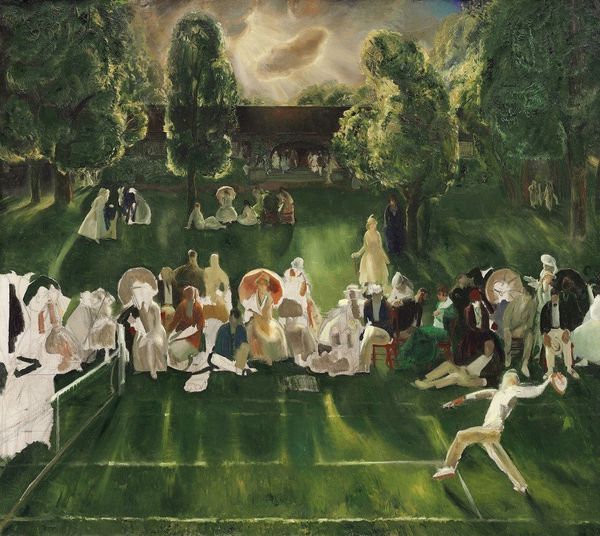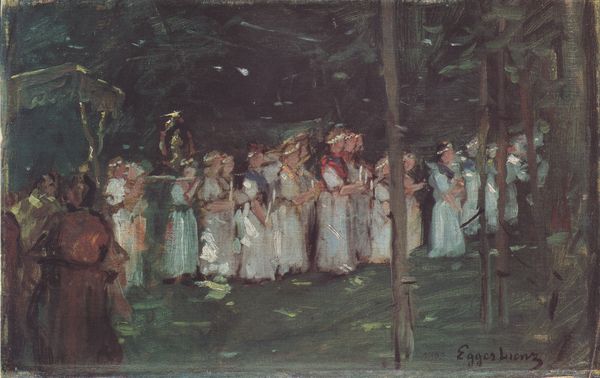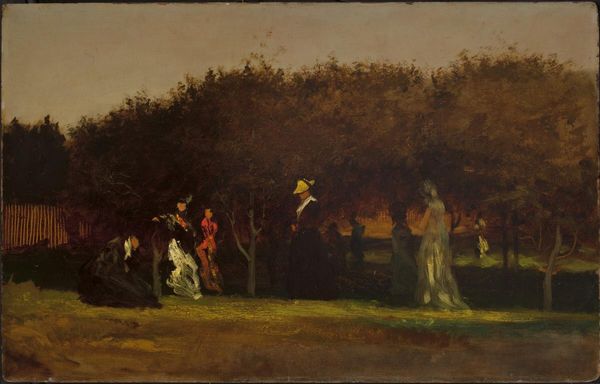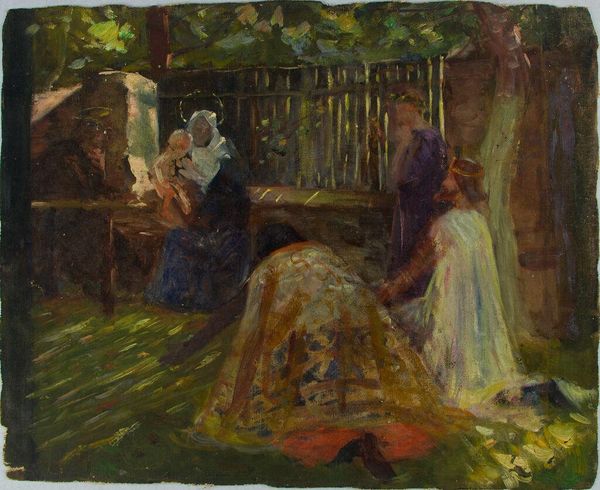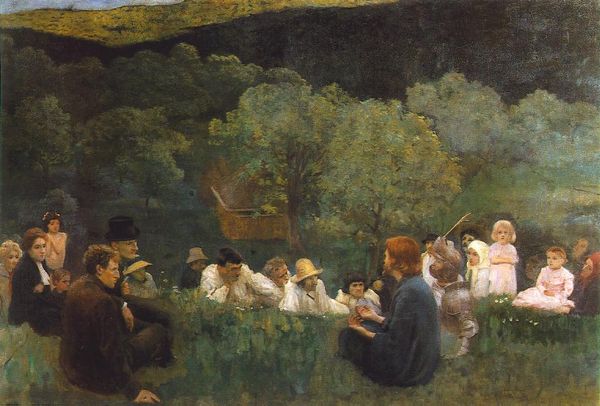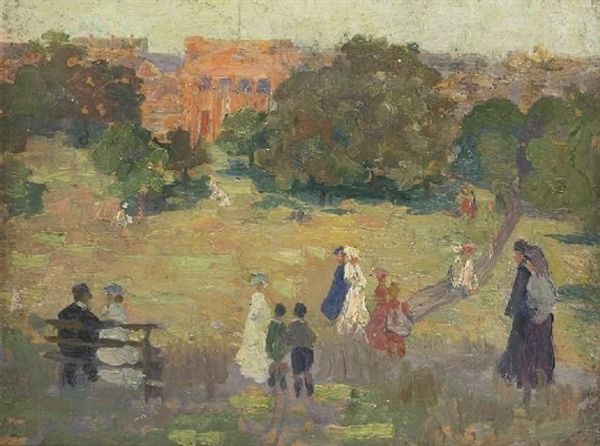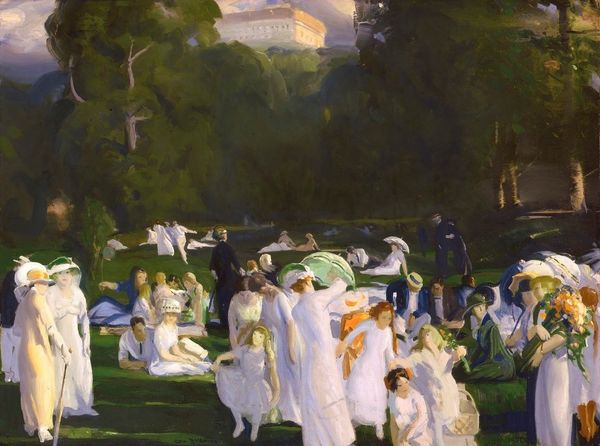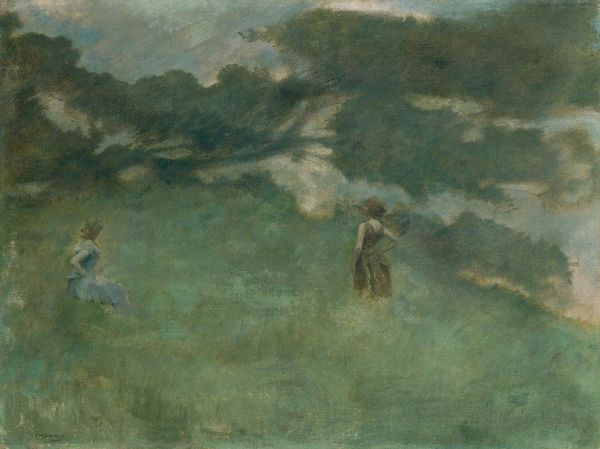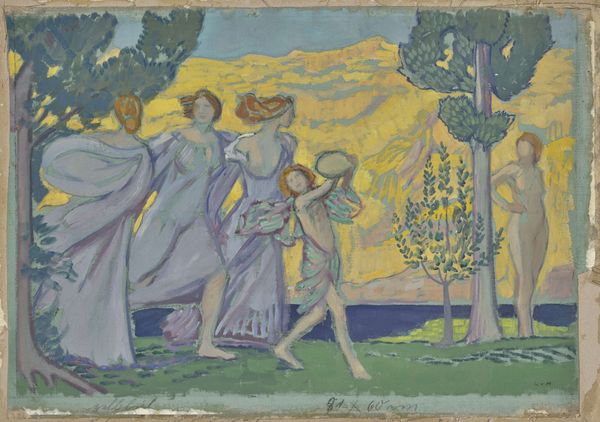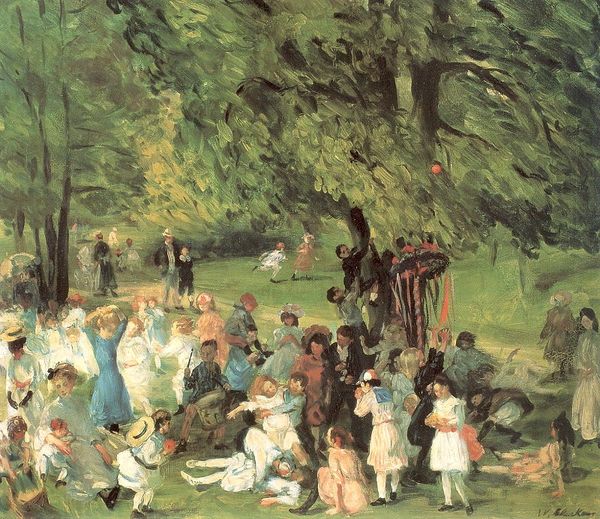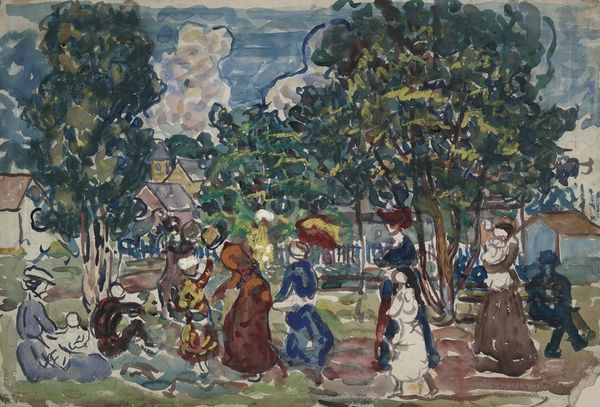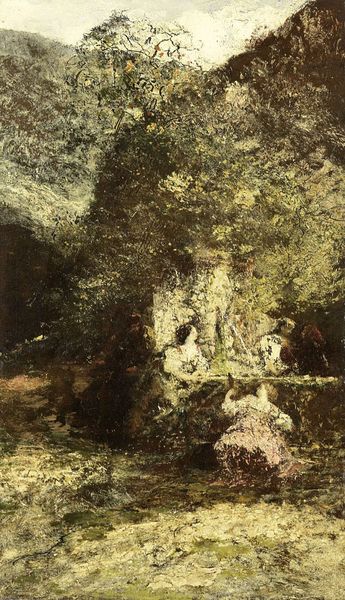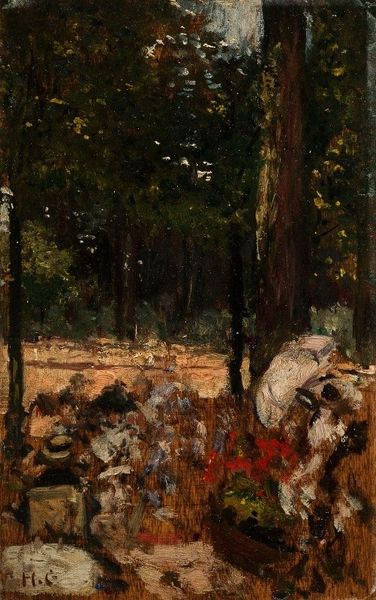
oil-paint
#
portrait
#
oil-paint
#
landscape
#
oil painting
#
ashcan-school
#
genre-painting
Copyright: Public domain
Curator: George Bellows painted this lively scene, "Tennis at Newport," in 1919, rendered in oil paint. What is your first take on this piece? Editor: I'm immediately drawn to the dappled sunlight filtering through the trees. It feels almost theatrical, illuminating clusters of people arranged as if on a stage. Curator: Yes, and in the early 20th century, Newport was a stage for America's elite. Bellows, associated with the Ashcan School, often depicted urban life, but here he turns his eye to leisure and privilege. Considering the year it was painted, just after the First World War, does the scene evoke specific tensions or social commentary to you? Editor: Perhaps a longing for normalcy? These tennis parties were about displaying wealth and social status. Look at the abundance of white clothing, parasols acting as status symbols, they evoke an almost ritualistic atmosphere. White clothing can often symbolize wealth, it isn't very practical, and easy to get dirty. Curator: Absolutely. Bellows captures this social theatre with rapid brushstrokes and a focus on capturing fleeting moments of light and activity. While it might appear idyllic, the social context complicates that reading. Note the subtle class divisions evident in the way the figures interact— or, rather, don't. It offers us an intriguing case study on how leisure becomes codified through visual expression. Editor: The symbols feel so intertwined, there is wealth and leisure but there is something slightly haunting about it. Consider how shadow plays across faces, figures rendered anonymously, becoming motifs in this play. What lingers isn't just an image of privilege, but a psychological imprint of what privilege meant at the time. Curator: I think you are on to something. He presents a seemingly joyful gathering but manages to convey deeper underlying societal structures at play, class anxiety and performance. Editor: Exactly. And while the brushstrokes capture a sense of immediacy, it's the symbolic resonance of each element that gives the work lasting impact. I am not certain it is happiness. Curator: Indeed. Bellows presents us with a world of shimmering surfaces and subtle shadows— a world demanding critical reflection, both then and now. Editor: A great example of why looking at art history using symbols helps understand deeper contexts.
Comments
No comments
Be the first to comment and join the conversation on the ultimate creative platform.
